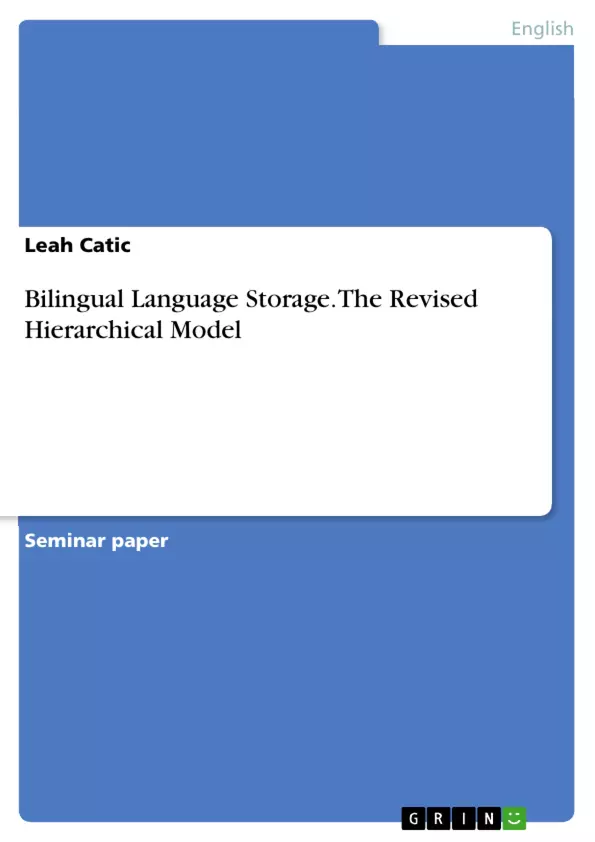In this paper the bilingual language storage and its influence on translation is observed. It will be explored how different models of translation see the language memory storage and bilingual translation and how these models work. Furthermore, it will be analysed how these models were developed, proven and how they are used in translation. Most importantly, the paper will focus on the probably most popular and most important model of language storage and translation: The Revised Hierarchical Model. Based on this model by Kroll and Stewart (1994), it will be analysed how it came to be and how it influenced thinking in translation. Lastly, some negatives about the Revised Hierarchical Model will be explained.
Bilingualism is the occurrence when a person or a whole society is able to speak two different languages. To acquire the status of a Bilingual, one can either grow up with two languages at the same time – e.g. first-generation immigrants speaking their mother tongue at home but speaking and learning another language in school – or studying a second language. The latter can be accomplished at different stages in life and in different environments, e.g. school, language courses, online etc.
Being a Bilingual has helped many people throughout the world. It makes it easier to communicate with others, and it is a very important part of a translator’s or an interpreter’s life. And, for example, English is the world’s most important commercial and trade language. This makes being bilingual necessary for many daily activities in life.
Inhaltsverzeichnis (Table of Contents)
- Bilingualism
- The Revised Hierarchical Model
- Why was the RHM developed?
- RHM in translation
- Critiquing the RHM
- The Revised Hierarchical Model – right or wrong?
Zielsetzung und Themenschwerpunkte (Objectives and Key Themes)
This essay explores the concept of bilingual language storage and its impact on translation. The primary objective is to analyze the Revised Hierarchical Model (RHM) and assess its relevance to understanding bilingual translation. The essay examines different models of translation and their perspectives on language memory storage and bilingual translation.
- Bilingual language storage
- The Revised Hierarchical Model (RHM)
- Models of translation
- The role of L1 (first language) and L2 (second language) in language acquisition and translation
- Strengths and weaknesses of the RHM
Zusammenfassung der Kapitel (Chapter Summaries)
The first chapter, "Bilingualism," introduces the concept of bilingualism and its significance in communication and translation. It discusses the various ways individuals become bilingual and the importance of understanding bilingual language acquisition.
The second chapter, "The Revised Hierarchical Model," delves into the RHM, a model developed by Kroll and Stewart in 1994. This model proposes a hierarchical structure for bilingual language storage, suggesting separate lexical stores for each language and a shared conceptual store. The chapter explains the key features of the RHM, including the strength of lexical links between L1 and L2 and the concept-mediated access from L1 to L2.
Schlüsselwörter (Keywords)
The primary keywords and focus topics of this essay include bilingual language storage, the Revised Hierarchical Model (RHM), bilingual translation, lexical memory, conceptual memory, L1 and L2, language acquisition, and translation models. These concepts are central to understanding the relationship between bilingualism and translation processes.
- Quote paper
- Leah Catic (Author), 2019, Bilingual Language Storage. The Revised Hierarchical Model, Munich, GRIN Verlag, https://www.grin.com/document/976458



